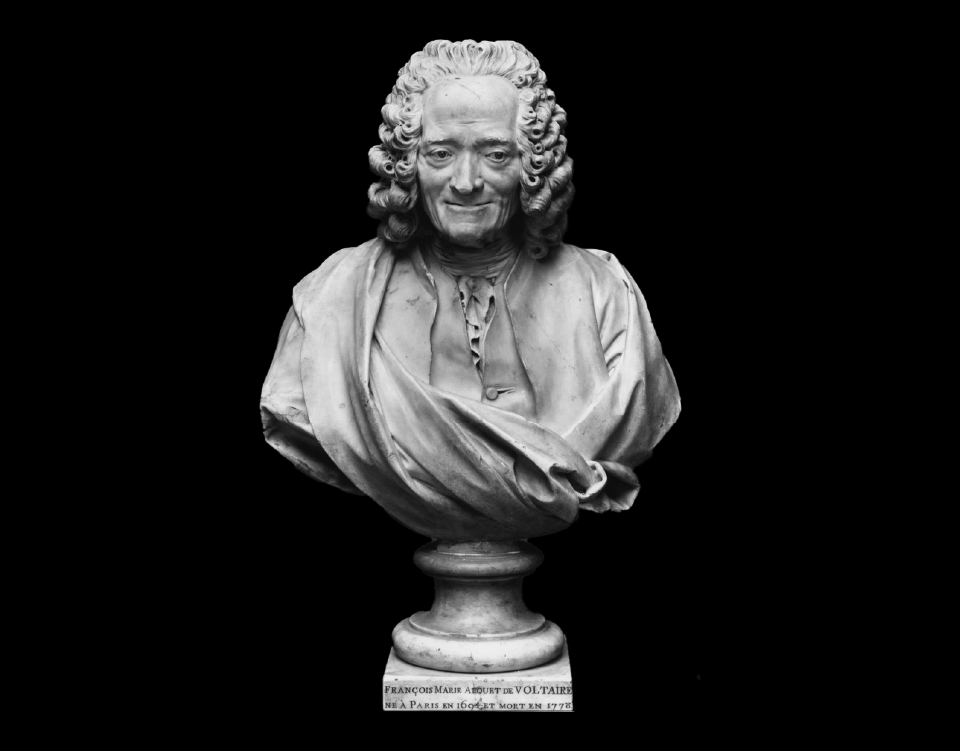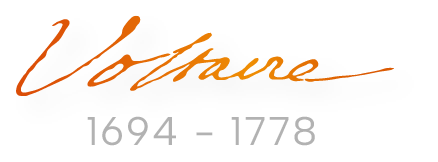
Catalogue of Manuscripts Relating to Voltaire
CMV (Catalogue of Manuscripts relating to Voltaire / Catalogue des Manuscrits relatifs à Voltaire) is a digital union catalogue that brings together international collections of Voltaire manuscripts, uniting records of these manuscripts in the same place for the first time. Begun in 2022 and generously supported by the Astra Foundation, the catalogue is an open-access, fully searchable resource that will significantly impact Voltaire scholarship by enabling new discoveries to be made, and fresh connections between sources to be drawn.
The catalogue will eventually contain approximately 20,000-40,000 entries for manuscripts produced by, or relating to, Voltaire, with work to create these entries currently underway. These include a wide variety of sources such as Voltaire’s wealthy correspondence, drafts and copies of Voltaire’s works, diary entries detailing meetings with Voltaire, commonplace books including quotes from Voltaire, and even notes on an almanac printed in Jamaica.
As well as providing records for well-known major collections (such as those held at the Bibliothèque Nationale de France), the catalogue also includes records for items held in smaller collections such as county record offices (such as Hertfordshire Archives and Local Studies Centre). In addition to manuscripts held in archives and libraries, CMV also accounts for private collections, providing (sometimes necessarily limited) records for materials that have passed at auction in order to capture manuscripts often obscured from the public gaze.
While CMV aims to be as complete as possible, new manuscripts are unearthed regularly and so the database has been constructed to allow new entries to be created, and existing entries to be updated in order to account for this.

“Comme j’imagine que vous avez actuellement quelque loisir j’en abuse peutêtre en vous priant de jeter les yeux sur le manuscrit que j’ai l’honneur de vous envoyer”.


Pushing New Boundaries
Standardised typologies have been employed throughout to enhance searchability, maintain consistency, and enable users to filter results efficiently. The catalogue also conforms to ISAD(G) guidelines to ensure interoperability. Although it conforms to these international standards, CMV pushes the boundaries of what a manuscript catalogue is. It moves beyond traditional bibliographic entries to include information on often neglected, but nevertheless crucially important, aspects of archival materials such as marginalia, watermarks, and signs of use, and makes it possible for users to search and filter by several of these attributes. In doing so, the catalogue seeks to support a variety of research needs, from potentially ambitious ‘big data’ visualisations to the most microscopic studies of the materiality of the text and object. The catalogue also provides direct links to archival repositories and digital resources such as digitised copies of the manuscripts described, and connects with the Voltaire Library Database.
It is planned that the catalogue website also features a host of resources of particular interest to teachers and students, such as videos demonstrating the processes of letter locking and guides to understanding eighteenth-century hands. CMV is therefore not only be a crucial starting point for researchers working on Voltaire and the eighteenth century, but also an informative introduction to Voltaire, the Enlightenment, and manuscript culture for those who are new to the field.

CMV User’s Guide
CMV has been built with users in mind, and so we hope that it is both intuitive and easy to navigate. To aid users, however, here are a few explanations of some of the conventions of the catalogue.
Titles
Titles have been updated, and in some instances created, for CMV to ensure records are consistent across the platform. The titles given to manuscripts in their institutional catalogues have been provided in the shelfmark field.
CMV Identifiers
Each record within CMV has been ascribed a unique CMV identifier (i.e. CMV1234). Users may search by these identifiers and should include them in their citations of any records on the CMV database.
Collections
Two types of collections have been used throughout CMV to unite related works.
Text collections unite various iterations of a given work, such as multiple copies of the same letter.
Physical collections digitally reconstruct large miscellaneous volumes and/or letter books that have been separated into individual records to enhance access to diverse archival materials within the catalogue, but which physically belong to one item.
When viewing a record that belongs to a collection, users will be able to click on the collection name to view the other records belonging to the same collection. For physical collections, the entries that form this list have been arranged to reflect the positioning of the manuscripts within the physical volume.
Dates
Users of CMV may search by years only, though fully transcribed dates are provided within individual records.
Places
The origin of a MS has been recorded in two formats. In the first instance, place names have been transcribed as they appear on the MS being described, including anachronistic spellings. In the second, place names have been modernised, and linked to an interactive map that visually displays the MS’s origin. Modernised place names have also been added as linked entities, meaning that users may click a place and view a list of all other records that originated in that place.
Materiality
Matters pertaining to the materiality of a manuscript are outlined in the Additional Comments and Additions fields. Additional Comments outlines any physical mark left on the MS, such as tears, holes, ink blots, and wax seals. Additions, on the other hand, concern textual or pictographic additions to the MS, such as marginalia, symbols, doodles, and stamps.
In addition to these long descriptions, materiality and marginalia keywords have also been added to each record, with each keyword being a linked entity. This means that a user can click on a keyword such as ‘Ink Blot’ and view a list of all other MSS in CMV that also feature this material aspect. Users will also be able to filter search results according to these key words.
Finding Manuscripts in Other Catalogues
As a union catalogue, CMV draws on the collections of international archives, libraries, and private collections. To aid users in finding the materials described in CMV in their existing institutional catalogues, each record provides details of the manuscript’s repository. Every repository has its own page on CMV which includes information about the said repository, including its name, address, contact information, ISO code, and ARCHON code where relevant.
The shelfmark field records the shelfmark given to the MS in its home repository, as well as the title given to the MS by the said repository, enabling users to find the relevant materials outlined in CMV in the institution’s catalogues. Where possible, direct links to the MS’s institutional catalogue have been provided in each record, as well as direct links to any digital reproductions of the MS. Details of any reproductions of a given MS (i.e. photocopies, facsimiles, or microfilm) are also provided where available.
Acknowledgements
CMV has been created in collaboration with ObTIC (Sorbonne) and StalTech Europe Ltd. The Voltaire Foundation is grateful to the Astra Foundation whose generous support made possible the building of this resource, and the John Fell Fund (University of Oxford) for a grant that has likewise supported the production of the catalogue. Thanks must also be given to the numerous archivists working with collections around the world whose catalogue entries provided the starting point for CMV.
The people who have worked on this resource are:
Zoe Screti (Voltaire Foundation)
Gillian Pink (Voltaire Foundation)
Glenn Roe (Sorbonne Université, Voltaire Foundation)
Stephen Ashworth (Voltaire Foundation)
Piero Stallo (Staltech Europe Ltd)
Aušra Bukniute (University of Oxford)

